Hi, welcome to another video about Shopify on our channel.
I’m Amos, CEO of BOA Ideas, a web development company that focuses on Shopify websites.
And I’m happy to talk with you about another topic that you’ll find interesting and that we get a lot of questions about.

And it’s the topic of discounts - a confusing word that we’ll try to unpack in a short time so that you leave as an expert.
So what are “sales”? First, let’s start with the word. Because people come to us and ask us about lots of different words. How do you do discounts on Shopify? How do you do sales? Promotions?
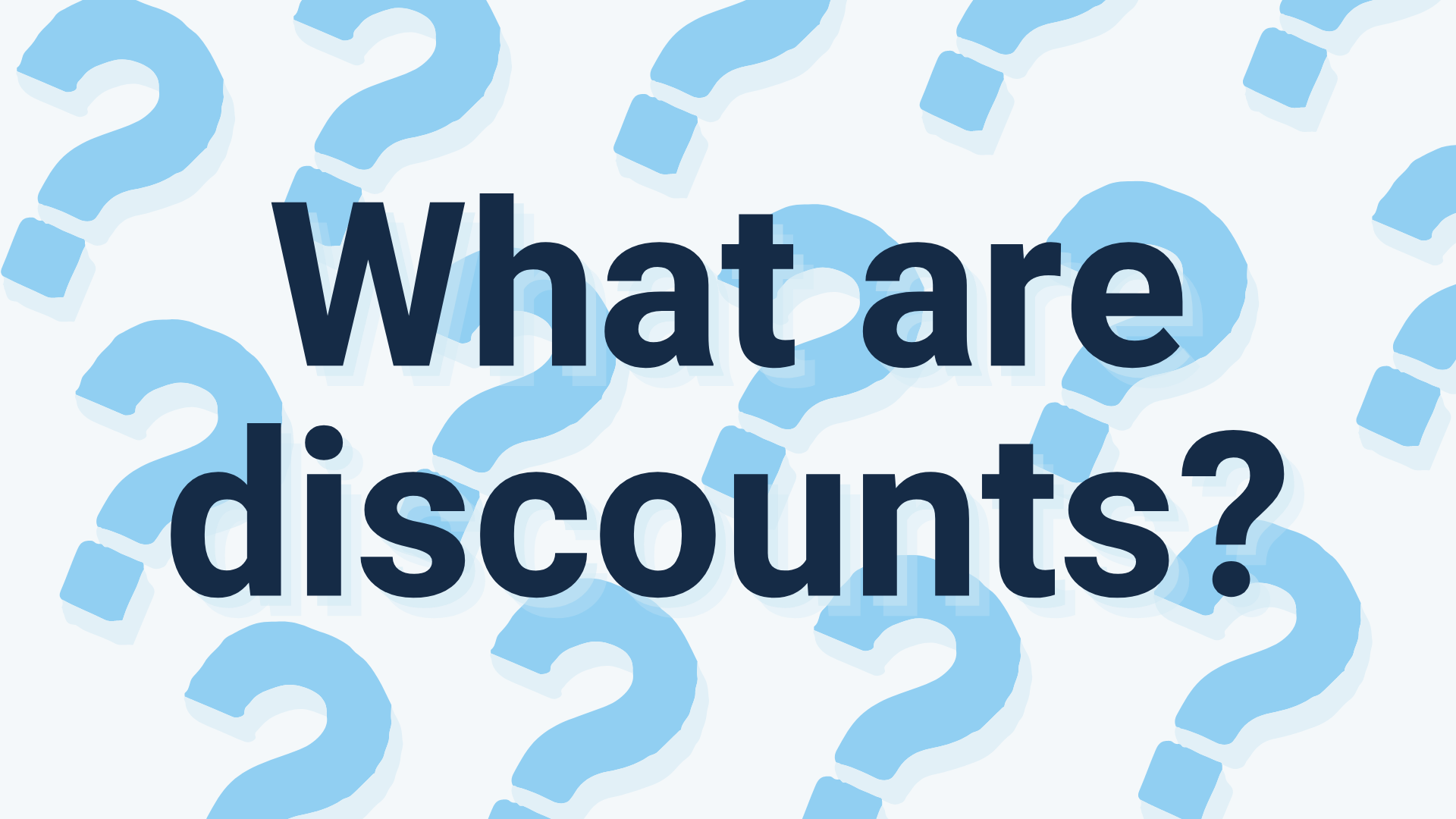
And everyone sees it differently. We talk about a discount and the other person is thinking about something different. Also within the sales themselves, there are a lot of different ways to define them - essentially different types of sales. And it even affects the user experience at the end of the day.
For example, if someone wants 1+1, if the additional product jumps up via pop-up and I can choose to add it or not, or if it automatically gets added to the cart - and other things like this.

So in this video, we want to focus on the more technical aspect - how we use it in Shopify, how we enable it. What we’re trying to consider is how in certain situations in Shopify we enable the customer to pay less than the regular price.
We want to explain that in Shopify, it’s not that simple to do all of the types of discounts that people often ask us about. So first, let’s explain why not and then we’ll explain what is possible to do.
Why Doesn't Shopify Allow Easy Discounts?
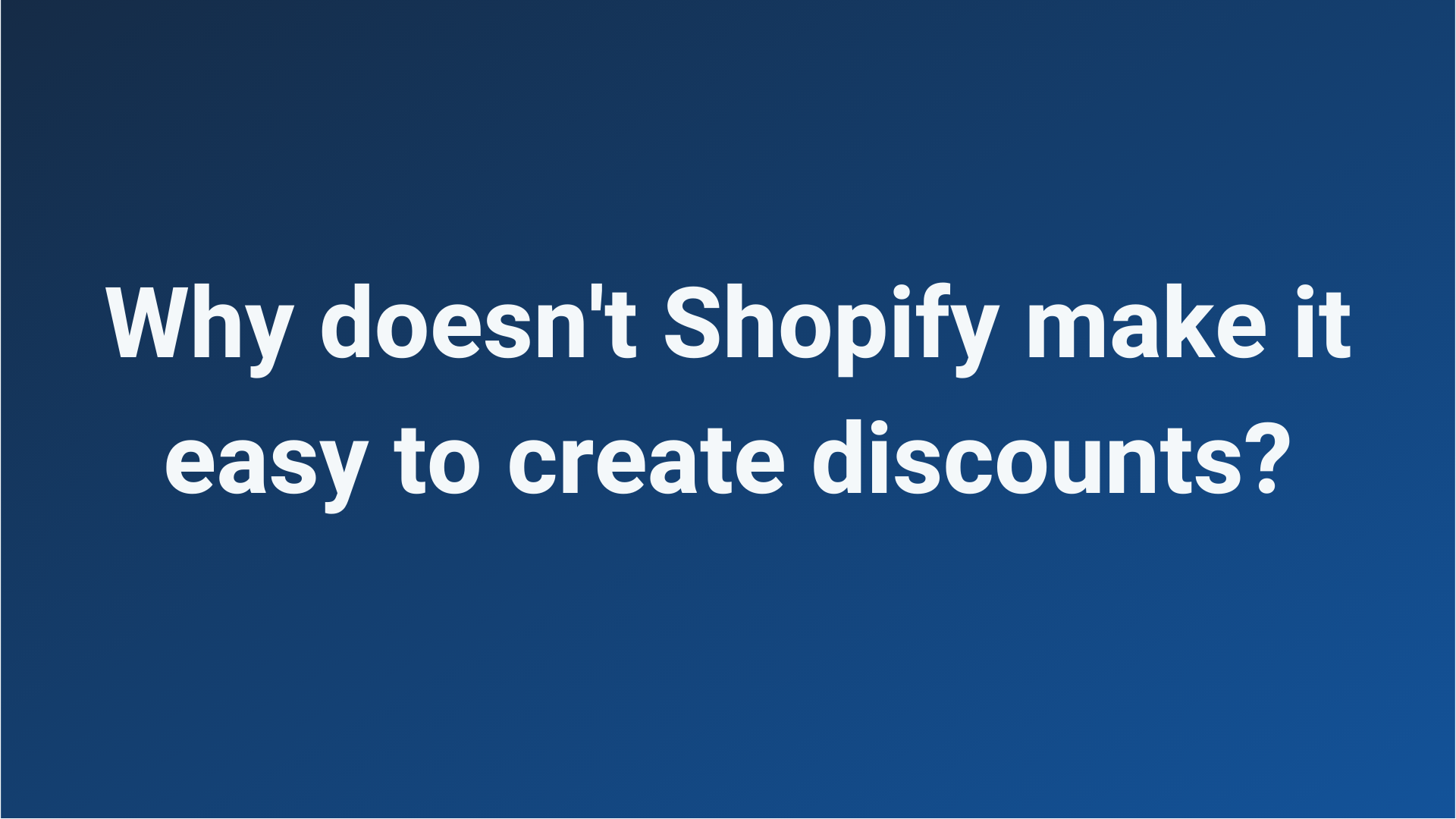
Why doesn’t Shopify allow creating discounts in a very simple and easy way from the system?
I want to start by reminding everyone that Shopify earns its money as a percentage of the sales that merchants make. Meaning - what is important to them is that you sell as much as possible. And they always do tests and checks - and since they’re 14 years old, they’ve done many of these - of what sells the most and what sells the least. And what they discover sells more, they work on it and add it to the platform. And what sells less they remove from the platform and even make it difficult for us developers to use it. Because they don’t want us to use it in our clients’ stores since then they will sell less and Shopify will earn less.
So that’s the background story.
They discovered that multiple and complex discounts hurt sales. Maybe what I said now sounds strange but the truth is that most of the time that we tell this to clients, they’re surprised. They’re surprised because in Israel it’s very very common to do different types of discounts - 1+1, buy two & get three, buy 300 & pay 200, join the membership and get a 20% discount. Lots of different variations like that.
But when you think about it and look at most of the websites in the world, you realize that it’s not actually that common. All of these types of discounts are not that common - more common is a discount coupon, which of course is on Shopify. But not all of these confusing and complex discounts, and definitely not a combination of them.
It’s important to me to explain that this idea of looking at other websites to see if they do or don’t have, in the end, there’s the matter of fact that you need to understand.
Shopify sometimes publicizes the results of the tests that they conduct so it’s worthwhile to pay attention. Essentially what they discovered, and this also doesn’t surprise us, that our customers spend a very very short time on our websites. A few minutes. And they usually do it from their mobile devices when they’re in the middle of two activities. They don’t have a lot of time or a lot of focus.
If they come to our website and they see a lot of complicated discounts, they can either say “What’s going on here? It’s chaotic and too much for me,” and they leave, or they can actually be interested but they say to themselves “I need more time to investigate the sale to the end.”
For example, if you do a sale of buy five, get the sixth free, the customer understands that they need to explore the website and find six items to earn the discount. And they might be excited about it, but they might not have time for it in the moment and then they don’t end up buying.
It’s true that there’s a difference between cultures and that outside of Israel, maybe it’s less common, and in Israel, it’s more. So customers come and are more used to it, and maybe even expect it. And it’s also true that there’s an idea of the target audience and specific products that are more driven towards discounts, even complicated and multiple discounts. But it’s important to raise the fact that in general, it’s something that is important to keep simple and straightforward so that it’s won’t just raise your prices but it also won’t hurt them.
Now, many times people say to me “Okay, Shopify is always checking what sells the most, and then they do it, so maybe they didn’t have time to check this yet.”
So first of all, it’s correct - in the area of discounts, just like in all other areas, Shopify always refreshes. But on the other hand, you have to remember what I said before - Shopify is 14 years old and for this topic, they are very slow to add capabilities. And I think that it’s possible to infer that they really believe that it’s not something - let’s say it like this - to exaggerate.
Even when they do some of these things, and we’ll talk about what they do, they’re things that we hear from clients that they don’t understand why Shopify did it in this way and not another. And we’ll talk about it soon.
So we need to put trust in Shopify that they’re not just an organization that knows what they’re doing, it’s also how they earn money. So if they think something hurts sales, they know what they’re talking about.
How Can You Create Discounts on Shopify?
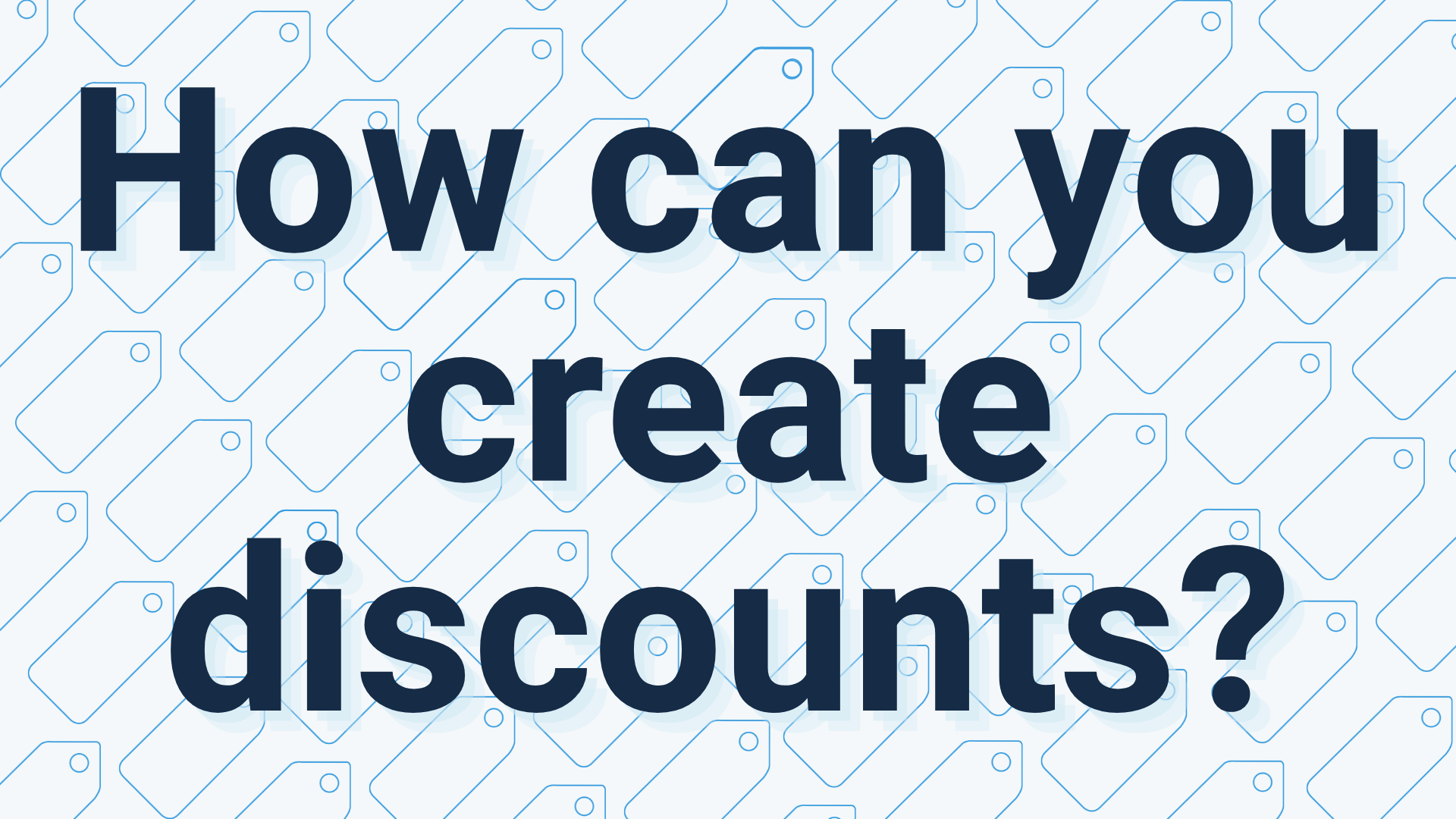
So how can we do discounts? What are the ways?
PRODUCT DISCOUNT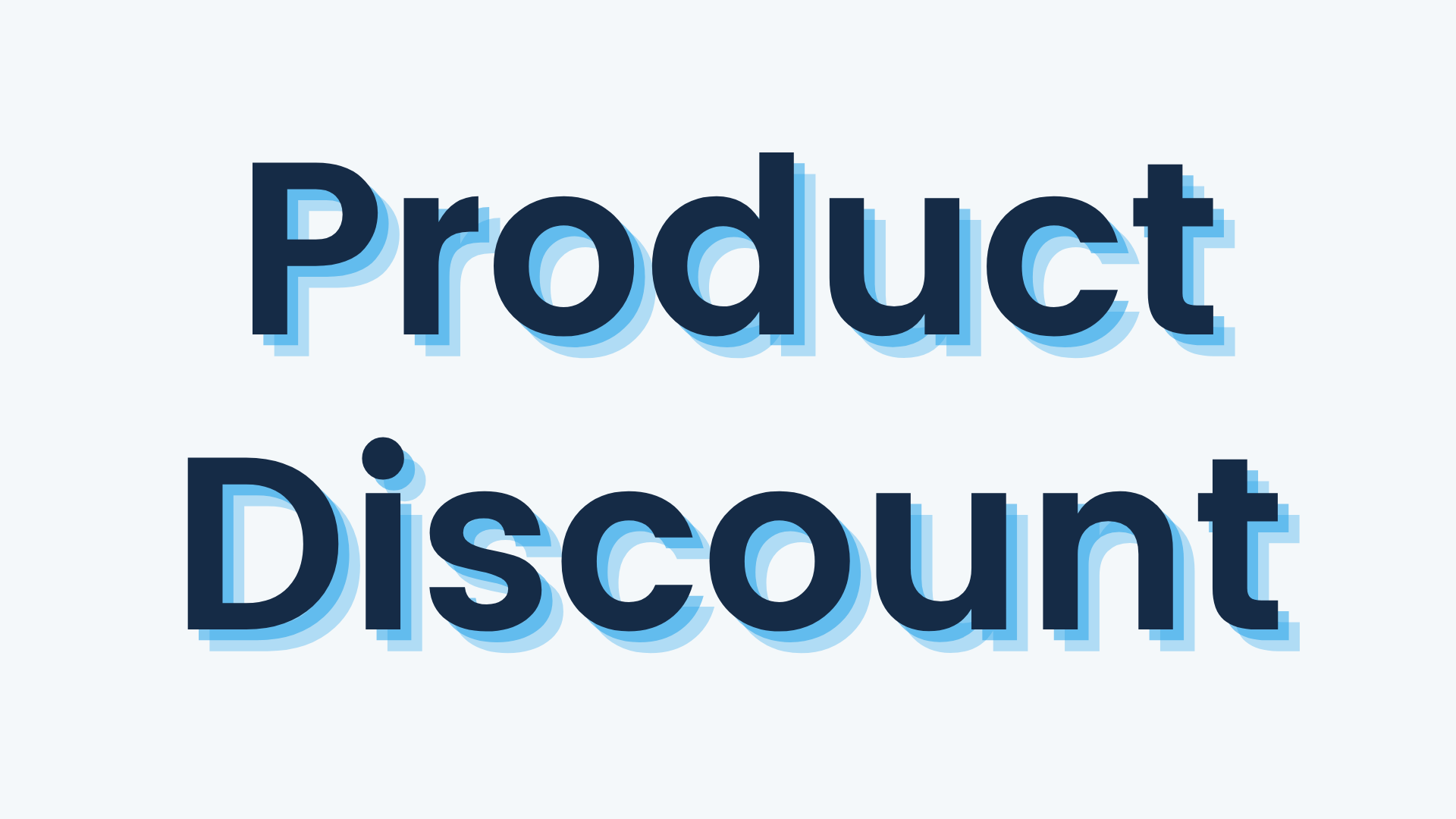
First, let’s start with the type of discount that in Shopify’s eyes that sells the most and will bring you the most customers. And it’s simply called “product discount”. It’s not a sale, it’s a discount. And from Shopify’s perspective, it’s not even a discount, it’s simply a lower price. And you have the choice to use Compare Price to display the old price with a line through it.
From a user experience perspective, this converts the most. Even for websites where the whole website is on sale, and then you say to yourself that they’re tricking you and just marking down prices. Even for these websites, they convert higher than if they didn’t use it.
And of course, if they do it right and in context, and do a discount for a specific collection or product and you put them on sale for a specific time period, it really causes people to buy. They’re on a bus or somewhere and they see that now it has a 20% discount, they just add it to the basket and buy.
For those who don’t know, simply go to the product page and in the “price” put a lower price, in “compare price” put a higher price and it will display it with a line. And that’s it.
There are sometimes legal topics, by the way, that you need to pay attention to. I don’t think it’s relevant to most people but there are a lot of stores that have regulation limits and you can’t play with the prices and old prices. For those that it’s relevant for, we can talk about it after.
Also, on the display of the website it shows it with a line by default along with a tag for sale but if someone wants to do something that has more information, it’s also possible. You can display the percentage of discount, or a timer that shows when the sale ends, etc. It’s all possible but it needs to be done with development.
MANAGING DISCOUNTS
Regarding the management of the discounts, oftentimes people will say, “okay now I have to enter it product by product and change the price and think about how much is 20%?” So, whoever needs this kind of management if it’s not one or two or three products, there are two popular ways to do it.
One is simply to do it with Excel. Do an export of the catalog, or just the products that are in the sale. And then in Excel you can create a formula that automatically calculates the prices and displays the old prices. And for someone who wants something a bit fancier, there are a lot of apps in the app store that can do it for you. You choose the categories and discounts and it calculates on its own. This, of course, will cost a few dollars a month but it’s possible that it will pay off for you.
So that’s in regards to a product discount or a line discount, as it’s sometimes called, and it’s the most simple.
COUPON CODE
The next stage is the coupon code. And if you look abroad, you’ll see that the public, and even us as Israeli customers that buy abroad and see it, really really love coupon codes for a psychological reason. It makes us feel like we got something that other people don’t have. In contrast to the discount that we mentioned where the price is lower, it’s for everyone. Here, a coupon code, if I grabbed it from Facebook from an ad, or from Instagram or email or if it was my birthday and I got a coupon code, I feel that it’s just for me. Especially, if it’s a limited-time offer, then I’ll have even more interest to use it.
So for those that aren’t familiar, coupon codes from one side are very very friendly and easy to manage in the admin management system of Shopify. And on the other hand, it’s very very powerful - you can do “buy x, get y” for free or at a discount. Choose which categories are included. What I need to buy, what I’ll get. A lot of mixes like these. Of course, individual discounts or a discount on an entire purchase. Also discounts for shipping fees, if you want. And all of this is with a coupon code. It’s important to remember that as like with many websites in the world, also with Shopify. You can’t mix coupon codes together. This is an important point.
AUTOMATIC COUPONS
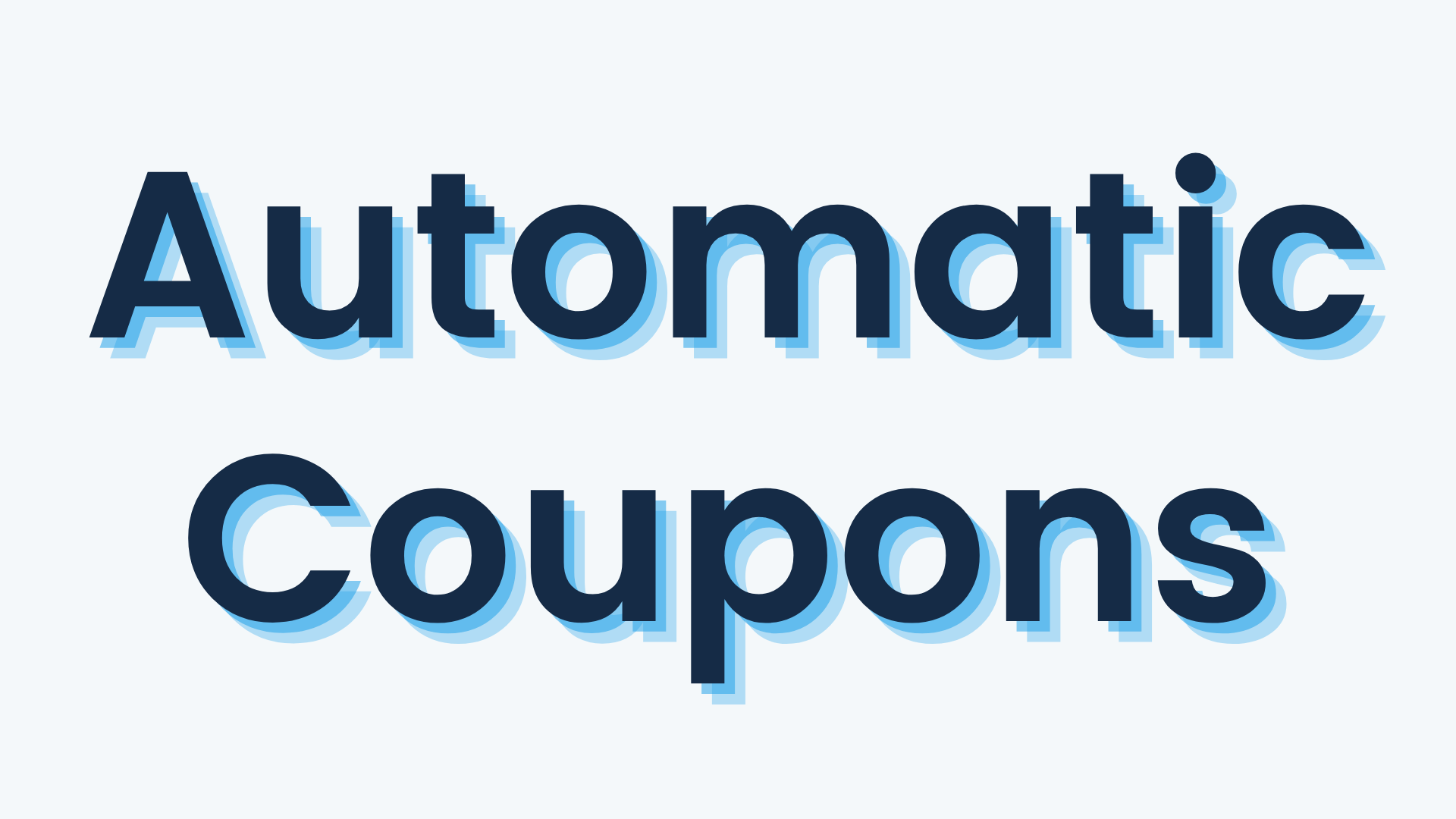
What will take us to the next point, and it’s a less new tool that Shopify published, are automatic coupons. The ability to set a coupon code that the customer doesn’t have to add manually themselves. If their cart meets the requirements, then that type of coupon will automatically apply itself to the cart.
It sounds very very good, but in practice, it’s not that good because there are a lot of restrictions. First of all, you can only activate one coupon code at a time and not more than that. That’s already a restriction. The second thing - when the sale gets applied to the cart, meaning if my cart is valid for this sale, I can’t remove the automatic discount if I have a better coupon code. For example, if I got one for my birthday. And this really frustrates customers.
So it’s best practice to do this discount of an automatic coupon code in individual instances - for example, something like Black Friday when you have a huge discount on both from the perspective of the discount it offers and from the perspective that it will apply to almost the whole store, if not the entire store, and in this time period, I’m not able to use a private coupon code. Then, it’s possible that it’s appropriate for things in this category. In other instances, it’s less appropriate.
COUPONS AND CONVERSIONS
Now, it’s important to say something about coupon codes and automatic coupons - they are types of coupons that only appear at the checkout. And so, it’s possible that it makes the conversion rate between adding to the cart and the checkout more difficult because I don’t immediately see the discount. But it does highly affect the conversion rate of someone who started the checkout. So you need to check with yourself on the conversion report if you have a problem with adding to cart and starting checkout, or there your percentages are high and the drop comes from people who started checkout and didn’t finish. Based on this, you can know if it’s more appropriate for you to do discounts on items, that strengthens the adding to cart and checkout, or if it’s worthwhile for you to use the coupon code in an instance where you have a big drop from who starts the checkout to who finishes it. So that’s in regards to those things.
SHOPIFY PLUS TOOLS
Now, there are two other really nice tools for discounts for Shopify Plus customers. For those who aren’t familiar, the Shopify Plus plan is a plan for big companies and business owners on Shopify that offers, first of all it’s more expensive, but it offers tools that are not in the regular Shopify, two of which I’ll talk about now because they’re related to discounts.

One is Scripts - Shopify Scripts, that with it we can develop complex discounts that people always ask us about. Buy 300, pay 200. Two for one hundred, three for two hundred. One plus one, one plus two plus three. Crazy discounts - as developes, we’re able to go in a code it. Even there, there are some restrictions but it’s much more flexible. And another benefit it has is that it will be displayed to surfers, even while they’re surfing the website. If, for example, they add three or four sales and it’s a bundle that lowers the price, right when it’s added to the cart, the price lowers. Not in the checkout. So this is a very very big benefit to Shopify Plus.
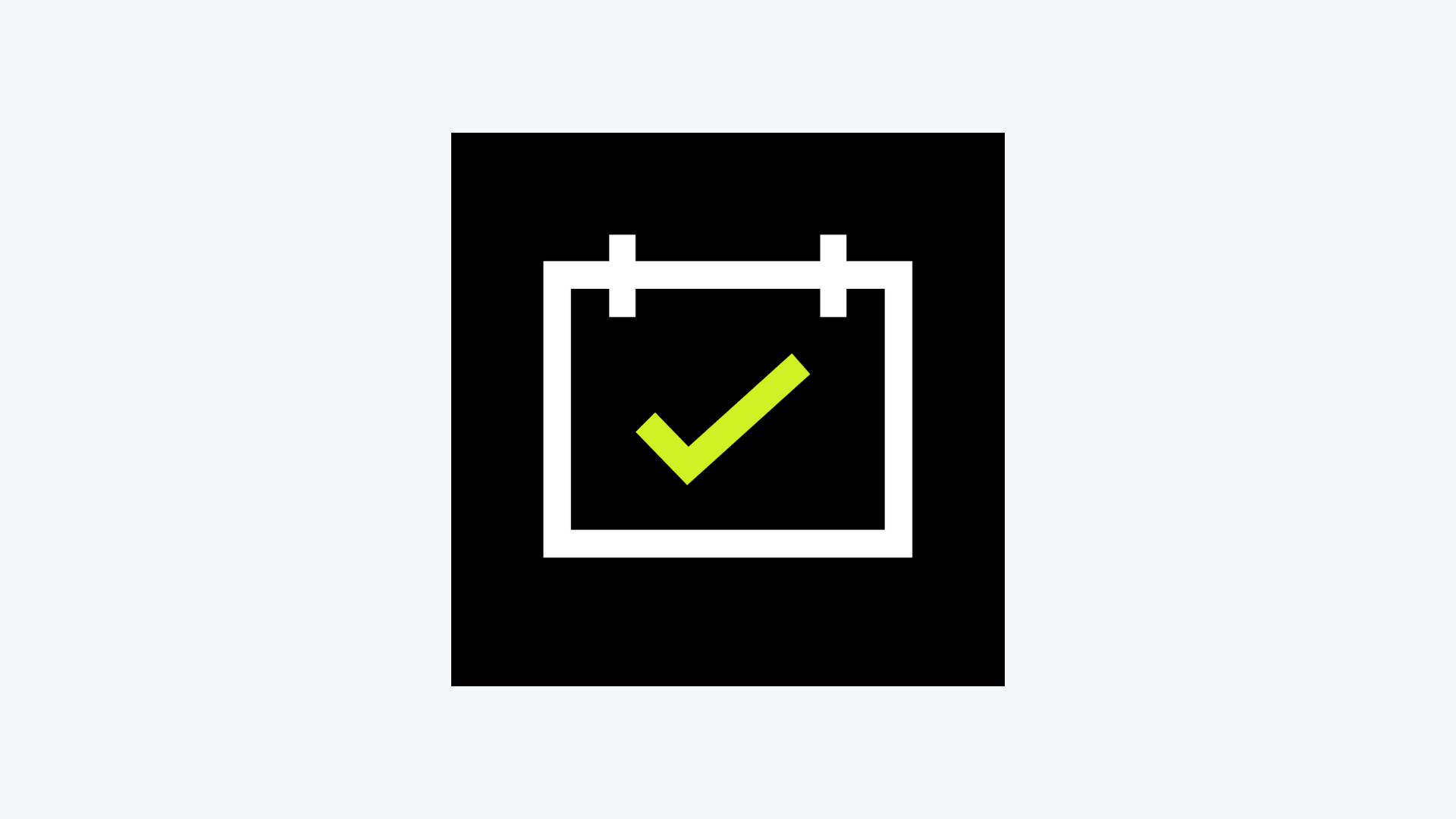
And also, Shopify Launchpad, that is essentially a tool to time, in advance, all of the things that will automatically happen in the store. I won’t explain everything, I’ll just talk about the portion on discounts. For example, we can define that on a specific date, at a specific time, a specific category will reduce by 20%. A second category will reduce by 15%. One singular product will reduce by 5%. It also doesn’t have to be by percentages - you can set the price or the discount. It’s very very flexible. And that’s just one element - the price element. The Launchpad does many more things. I’m not going to elaborate on Scripts and Launchpad too much because they’re tools that only relevant to Shopify Plus. Anyone who’s interested is welcome to get in touch with us.
APP STORE APPS
The last thing you can do is use different types of apps that are in the Shopify app store. But it’s also important to understand how they work. That means, often, people will request from us to enable different types of discounts, and when we say that it’s something that Shopify makes difficult for us to do, then they say “but there are apps - how did they do it?” So I’ll explain how they did it so you can understand what the disadvantages are.
Essentially, the discount apps on the Shopify app store work in one of two ways. Either they create for you, automatically, and anyone who uses this type of application should pay attention, duplicate versions of every product that is a part of the discount, at the discount price or the price of zero. They promise that these products, from one side won’t be available in the store so that someone won’t accidentally add it to their cart for free or at a discount. But, they will make sure that only someone who qualifies for the terms of the discount that you set - the application will switch the full-price product with the product that it created with the cheaper price. These apps used to be more popular until the customers, really the store owners, saw what a mess it made for them in the store, the catalog, and the inventory management. And quite a few people succeeded in accessing the discounts, the cheaper prices, even when they didn’t qualify. And because of this, this type of application declined, and I’m glad about it.
The second type of application are apps that use the draft order feature. People who are familiar with Shopify, you can, as store owners create orders on behalf of customers. Meaning, they don’t need to go through the website and add products to the cart and go through the checkout. But within the admin, you can create orders. And for those who don’t know how, maybe we’ll do a separate video on it - to create orders. And then, because you’re the admin and store owner, you’re free to do it at whatever price you want. That means you can give whatever discounts you want, including zero, including with shipping fees or without shipping fees, etc.
A lot of discount apps today make use of this. They let the surfer surf the website and add products and every time, they check if the cart qualifies for the discount, and if so, they create a restricted draft order. Once there, the application controls the prices and can lower the prices and then swap between the draft and cart. It’s an interesting approach. We also used this application in certain instances but it’s not complete. You need to understand that. It wasn’t Shopify’s intention with the draft order. Draft order was designed to prepare an order and send it to the customer. So there are some disadvantages to it. For example, sometimes it can be hard to return from a draft order to a regular order if you want to remove a product or add a product, etc. Also the experience of how it acts on the screen, there are some jumps and other small weird things like that. But, whoever really wants to move forward with complex and multiple discounts and the Shopify out of the box options aren’t right for them, and they’re not ready to move to Shopify Plus, maybe it worthwhile to do a test and to decide if it fills your needs. We, generally, don’t recommend it, because in general, we agree with Shopify that multiple and complex discounts hurt sales. And because from a technical perspective, it’s not perfect.
So I hope that I helped you organize all of the ideas in this world and that now things seem more clear. If you have any questions - and often, answers elicit more questions after these videos, feel free to write to us or call us or ask us questions via any platform. We hope you enjoyed and good luck. Thanks!
Powered by Froala Editor
Powered by Froala Editor
Powered by Froala Editor
Powered by Froala Editor
Powered by Froala Editor
Powered by Froala Editor
Powered by Froala Editor
Powered by Froala Editor
Powered by Froala Editor
Powered by Froala Editor
Powered by Froala Editor
Powered by Froala Editor
Powered by Froala Editor
Powered by Froala Editor
Powered by Froala Editor
Powered by Froala Editor
Powered by Froala Editor
Powered by Froala Editor
Powered by Froala Editor